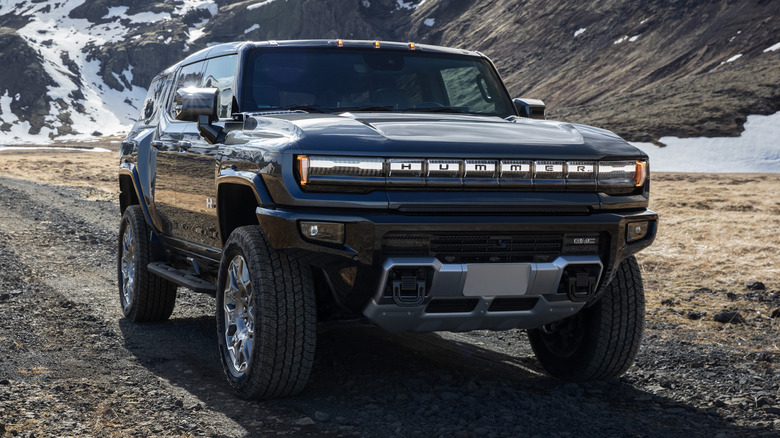
Ask virtually any automotive enthusiast about a nameplate they'd like to see revived and they'll be able to give you at least one classic model that they think has been unfairly consigned to the archives. Car lines are inevitably retired as their makers pivot their lineup toward other segments, or as buyers begin to lose interest. In some cases, entire brands get discontinued, taking multiple historic nameplates with them — take, for example, GM's decimation of its roster of companies in the wake
of its 2009 bankruptcy.
However, these discontinued cars don't always stay dead. The switch to electrification has ushered in a wave of nostalgia among car buyers, and as a result, many car brands are now digging deep into their archives to resurrect classic names from years past. These 13 previously discontinued nameplates have all been brought back as EVs or are set to be revived soon, either in America, in Europe, or in some cases, across both markets.
Read more: 10 Luxury Cars That Are Cheap To Maintain
Dodge Charger Daytona
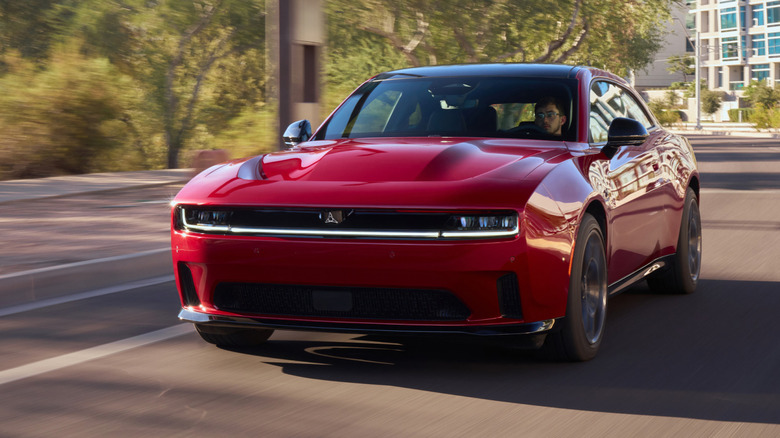
While the revived Dodge Charger Daytona is impressive on both the track and the road, it was always going to have difficulty living up to the success of its predecessor. Dodge has positioned the electric Charger as the direct replacement to the old-school performance Chargers it discontinued in 2023, including the legendary Hellcat models. On the whole, enthusiasts didn't immediately buy into the idea an electric car as a worthy successor, and as a result, it became the worst selling car of 2024.
The lack of demand from buyers has prompted Dodge to rush ICE Charger models into production earlier than planned. At the time of writing, Dodge bosses have promised to launch the gas-powered six-cylinder Charger in the second half of 2025, but stayed tight-lipped about an exact release date. Some rumors have also suggested that a Hemi V8 version might be eventually launched, although nothing has been confirmed for now.
Despite low buyer demand, Dodge has continued to back its electric Charger, and plans to build both electric and gas-powered variants simultaneously. It's been a rough start for the brand's electric transition, and Dodge's troubles don't seem to be easing, with the current U.S. tariffs set to affect the car, which is made in Canada.
GMC Hummer EV
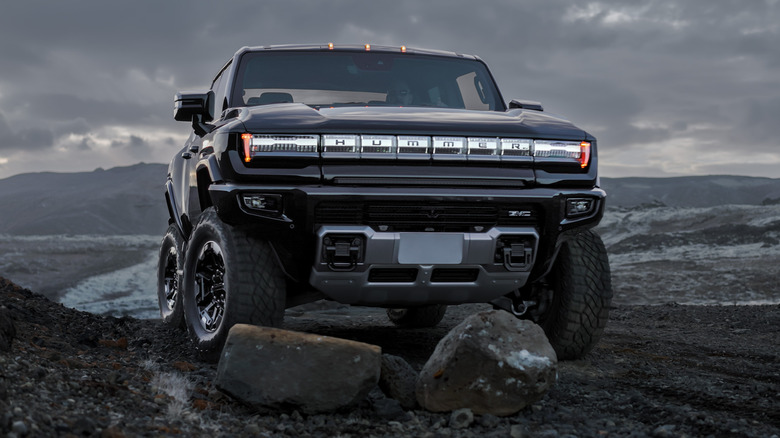
The first military Hummer was built by AM General in 1983, with the U.S. Army being the initial and primary customer, and a minority of sales coming from other foreign armies. By the '90s, the military Hummer (HMMWV) had become an instantly recognizable symbol of the American military. To capitalize on that image, AM General launched a civilian version of the vehicle in 1992. Seven years later, GM purchased the Hummer brand, and over the next decade, launched the Hummer H2 and H3 to sit alongside the H1.
GM's bankruptcy saw the entire Hummer lineup axed alongside other struggling GM brands, but in 2020, the automaker announced a resurrection of the marque. Rather than the gas-guzzling engines of old, the new Hummer would be an all-electric affair, and would be available both as a pickup truck and in SUV form as the Hummer EV SUV.
It might have ditched its combustion engine, but in most other respects, the revived Hummer sticks to the formula of the original. It's still ridiculously oversized, impressively capable off-road, and hilariously powerful. Its 1,000-hp output comfortably beats its similarly attention-grabbing rival, the Cybertruck, and its Crab Walk mode is a fun novelty even if it — like the rest of the truck — doesn't really serve much of a practical purpose.
Scout Traveler
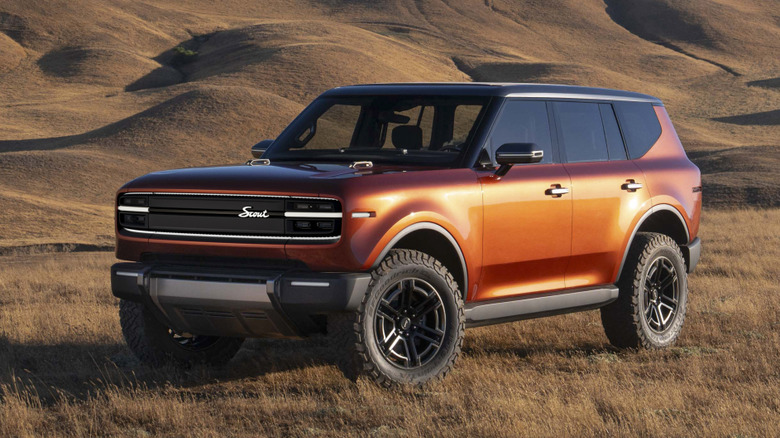
Today, SUVs represent one of the largest and most lucrative segments of the automotive market, but back when the original International Harvester Scout launched in 1961, the idea of a comfortable, versatile work vehicle was still novel. The Scout's early success helped popularize the body style, with Ford reportedly taking inspiration from the design when creating the Bronco.
The IH design and engineering team was smaller and much less well funded than that of the Blue Oval, but nonetheless, it kept refining the Scout's design over the following decade. A second generation Scout, the Scout II, was launched in 1971, and remained in production until financial woes saw IH end Scout production in 1980. IH was split into divisions and sold off to various buyers, but the Scout brand would remain dormant until the rights to the name were bought by VW Group in 2021.
A year later, Scout was revived as a VW-backed startup, with the intention of building a new all-electric truck and SUV. The new EVs revive two historic model names from Scout's past — the Traveler and the Terra — with the former being an SUV and the latter being a pickup. Production versions of both are expected to launch as soon as 2027, with VW's considerable financial backing allowing Scout to expedite the processes of both designing the vehicle and building its South Carolina factory.
Ford Capri
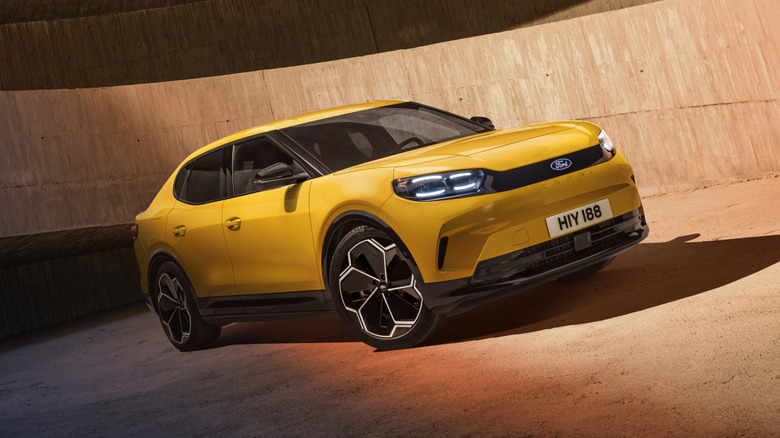
While it might not be familiar to American buyers, the Ford Capri is a legendary nameplate in Europe. It was essentially Ford of Europe's answer to the Mustang, a pony car built specifically for European tastes. It proved hugely popular, with almost two million examples of the car being sold across its three generations. Production launched in 1969, with the second generation Capri arriving in 1974. The third and final generation in the original production run was launched in 1978, and survived until 1986.
Ford of Europe's modest development budget eventually caught up with the car, and by the time it was discontinued, it had lost its competitive edge with buyers looking elsewhere for their performance fix. Still, the car has enjoyed continued popularity in the decades since its discontinuation, being a regular sight at classic car shows and having enthusiastic owners' clubs.
Much like with the Mustang, Ford has reinvented this classic nameplate as an electric crossover. However, unlike with the Mustang, it doesn't still make the original ICE pony car — the only new Capri on offer today is the EV. It seems that Ford overestimated buyer demand for the electric Capri, as it announced in late 2024 that it was scaling back production of both the Capri and the related Explorer due to slow sales.
Fiat 500e
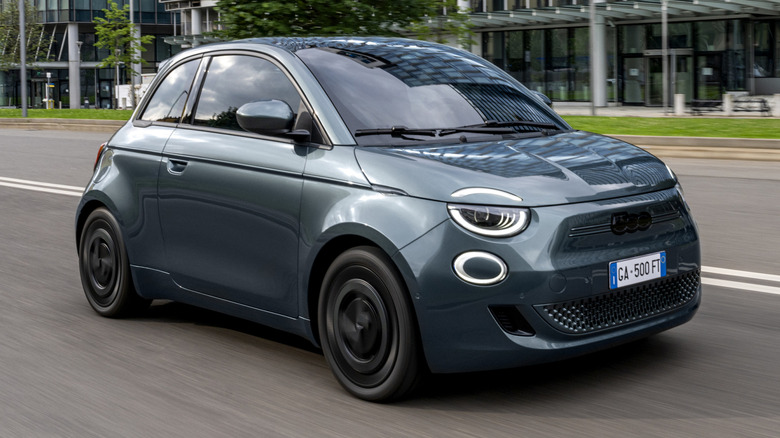
Ford isn't the only automaker that's been caught out by unexpectedly low demand for its EVs. Fiat has also had to alter its production plans, having previously discontinued the gas-powered 500 and replaced it with the all-electric 500e. As well as catering to its core market in Europe, the 500 was also sold in a variety of other locations, including the U.S., where it was introduced for the 2011 model year. U.S. Fiat dealers now carry the 500e, but it has been an extremely slow seller.
To boost demand for the 500 and thus give workers in its Italian factory something to do, Fiat has re-engineered the all-electric 500e platform to accommodate a gas engine with a small hybrid battery. Fiat announced that the first pre-production examples of the hybrid 500 were completed in May 2025, with mass production due to start by the end of the year. The electric 500e will also remain available, but Fiat hopes that the reintroduction of a combustion-powered 500 will keep sales healthy enough until buyer demand for the EV increases in the brand's core markets.
Renault 5
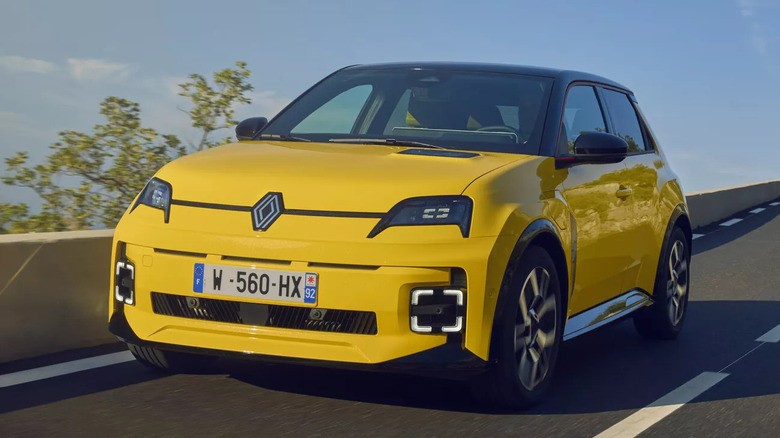
Unlike many of its peers, Renault's revival of its classic 5 city car has been very successful so far. Since its launch, the 5 has quickly risen to become one of the most popular EVs in Europe, and was awarded Car of the Year by a pan-European jury of journalists in 2025. Despite putting up billboards displaying the 5 in New York in 2024, Renault has no plans to return to America, although its performance division, Alpine, is rumored to make a return later in the decade.
It's not like the 5 would appeal to American tastes anyway — small cars have never been particularly popular here, and the 5's modest 148 horsepower output and roughly 250 mile range aren't well suited for high-speed highways. The original 5 was also designed squarely for European tastes, but that hasn't stopped it becoming a sought-after classic in the States in the decades since its discontinuation. In particular, the Renault 5 Turbo rallying homologation special of the '80s draws consistently high levels of interest from American collectors, with the cleanest examples selling at auction for six figure sums.
The original 5 was briefly sold in the U.S., being first introduced in 1976, but it never saw success and was discontinued less than a decade later. The story was very different in Europe, where Renault sold over nine million examples of the 5 before it was effectively replaced by the Clio in the early '90s.
Jaguar Type 00
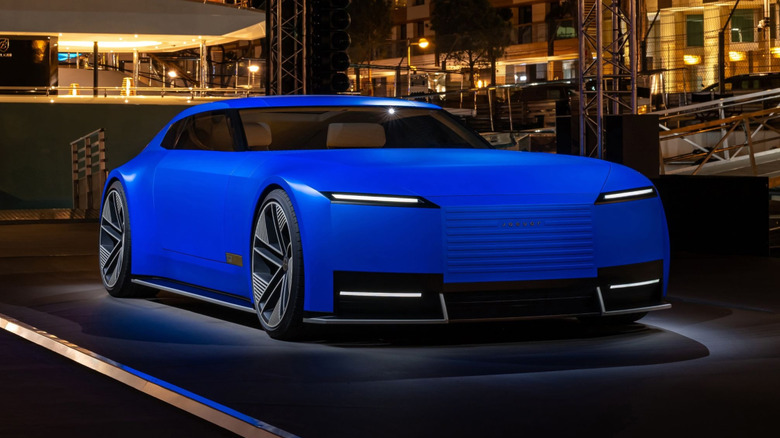
Rather than discontinuing a single model and reviving it as an EV, Jaguar is in the process of discontinuing its entire previous lineup. The XE and XF sedans ended production in mid-2024, alongside the F-Type sports car, while the E-Pace and I-Pace crossovers were wound down at the end of that year. Only the F-Pace SUV remains in production, and at the time of writing, it's set to be discontinued in early 2026.
Everything is being replaced by an all-new, all-electric lineup that has proved to be endlessly controversial. While some people are coming around to the recently unveiled Jaguar Type 00 EV, others have already written off the historic rebrand as a disaster. Individual opinions might remain very divided, but one thing is inarguable: the rebrand has given Jaguar a wealth of publicity, imprinting itself on the minds of the car-buying public in a way that none of its previous generation models have. Whether that publicity translates into sales remains to be seen.
Porsche Cayman/Boxster
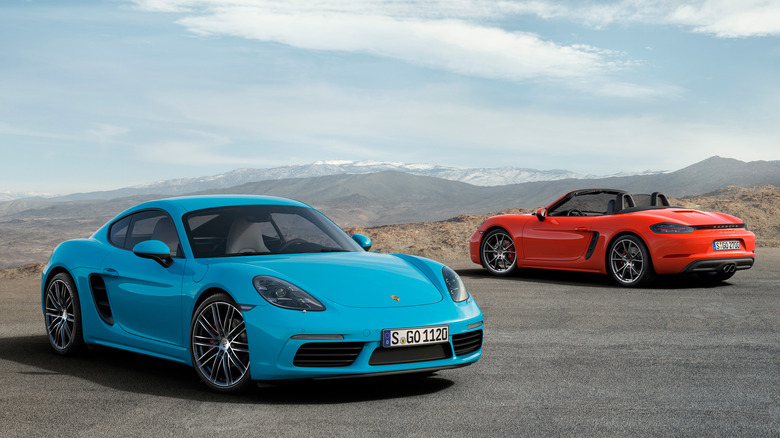
Thanks to a combination of impending combustion car bans and tightening cybersecurity regulations across Europe, Porsche made the decision to globally discontinue both the Cayman and Boxster. The sister cars will be replaced by an electric successor, which is set to be officially unveiled in the near future, although no concrete release date has been set at the time of writing. Nonetheless, prototype versions of the upcoming car have already been spotted testing in public with only minimal camouflage.
Technical and performance details remain scarce for now, although it has been confirmed that the new Cayman and Boxster will sit on a dedicated sports car platform rather than sharing a platform with the brand's existing electric models. The baby Porsche sports car doesn't have much competition at the moment, although several potential rivals from the likes of Alpine and Caterham remain in development. In the meantime, buyers in the U.S. can still order a new Cayman or Boxster, with the exact end of production date yet to be confirmed.
VW ID.Buzz
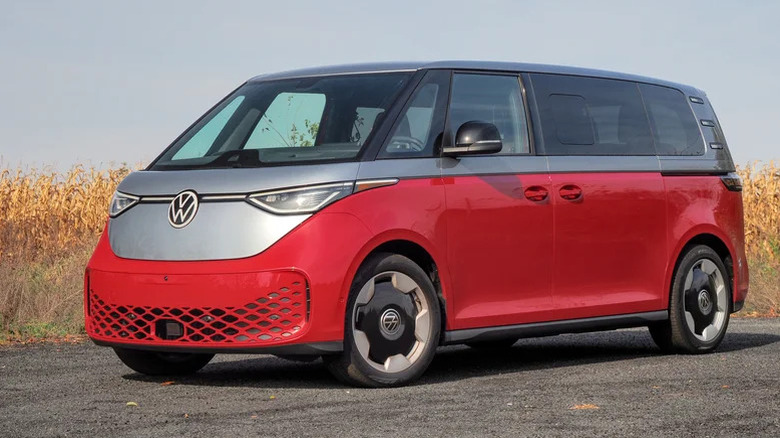
The ID.Buzz name might be technically new, but there's no mistaking the fact that the 2025 VW ID.Buzz is a modern revival of the classic VW Type 2. It's an excellent one at that, combining attention-grabbing looks and a comfortable ride with a spacious, practical interior. Its range isn't particularly impressive for an EV of its size, with our real-world testing giving the van an estimated total range of 228 miles, but then again, it's not like the original Type 2 was designed to be a highway-conquering mile muncher either.
The ID.Buzz marks a welcome return to the U.S. for the Volkswagen Van, which has been through many evolutions during its time on sale. The van was discontinued in the U.S. after 2003 when the T4 generation — sold as the Eurovan — was retired. However, it has remained in production for other markets since then, with the gas-powered van, the T7 Multivan, having been on sale since 2022. Americans miss out on the Multivan, but the ID.Buzz landed in U.S. dealerships for the 2025 model year.
Citroën 2CV

A production version is still a few years away, but Citroën reportedly has plans to resurrect the 2CV as an electric city car as soon as 2028. Reports about the revival first emerged from Autocar in January 2025, and were compounded in March when the brand confirmed it was planning to launch heritage-inspired new models in the coming years. The original 2CV was unveiled in post-war France in 1948 as an affordable car to mobilize France's population, and remained in production in various forms until 1990. Over 5 million examples of the car were produced over that period.
The 2CV was officially sold in America for part of the '50s and '60s, but only around 1,000 examples ever found homes Stateside. The car's tiny, underpowered engine, unique snail-like design, and ultra-basic construction were completely at odds with American buyers' tastes at the time, so in a way it's surprising that the brand even managed to shift any examples of the car at all in the U.S.
If the 2CV is resurrected with its original nameplate, it won't be making it stateside, and even in Europe, it's unlikely to be a volume seller like the original car was. Instead, it forms part of Citroën's plan to create a number of lower volume, attention grabbing models to help draw attention to its core range of crossovers and hatchbacks.
Nissan Micra/March
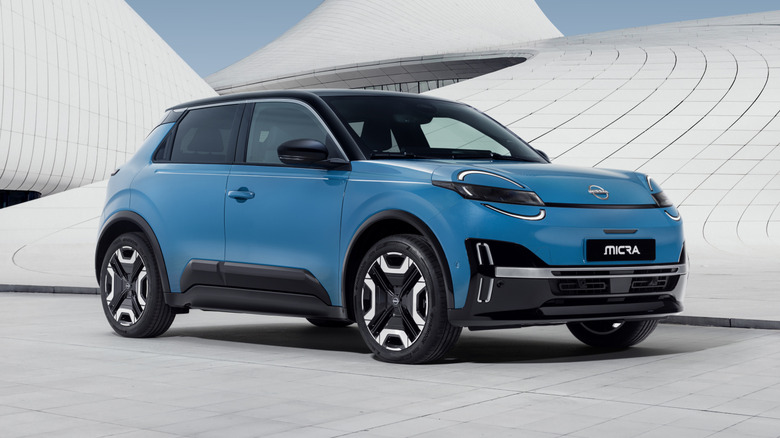
Known as the March in Japan and the Micra in other markets, the Japanese automaker's city car was first announced in 1982. It was initially manufactured in Japan and Europe for the two markets but by the time that the third-generation Micra launched in 2002, Nissan had expanded its production facilities to produce the car locally for the Chinese, Thai, Indian, and Mexican markets. Cumulative global sales of the model topped six million units in 2011. The latest generation of the Micra launched in May 2025, and marks the most radical transformation of the car since its introduction.
The gas-powered Micra has been discontinued and replaced with an all-new, all-electric model that sports a retro-inspired design. It's part of a major push by the company to regain its place as a serious force in the EV market — Nissan helped pioneer the modern EV segment with the launch of the original Leaf, but has since been overtaken by fresher competitors. The Leaf has also been overhauled for 2026 with a longer range and revised styling, and is set to hit American dealerships soon. The Micra will not be reaching America, but it plays an equally important role in turning around Nissan's fortunes in other key markets where small cars are more popular.
Renault 4
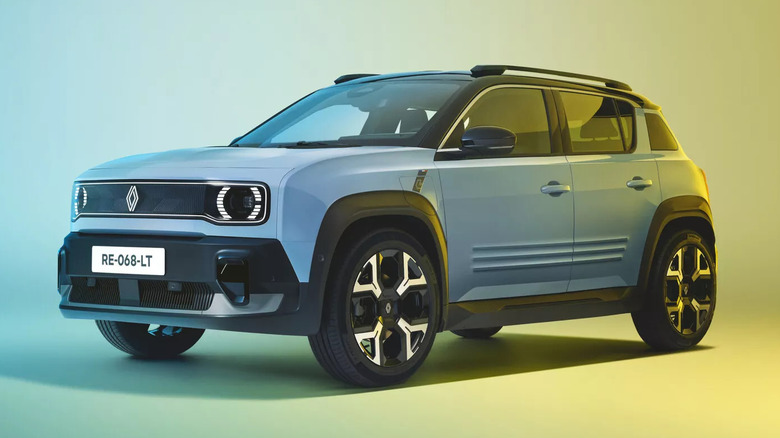
Alongside reviving the 5, Renault has also brought back its classic 4 nameplate, with the two models fittingly based on the same platform. The 4 is another popular model from the French brand's back catalog, with over 8 million of the original cars sold between 1961 and 1992. Its boxy hatchback design was unusual at the time of its release, but it made the car more practical for carrying large loads than its similarly sized rivals. Many examples became workhorses, and were used as service vehicles by all kinds of workers from farmers to airline staff.
The new 4 offers similar performance and dimensions to the new 5, but it has a slightly longer wheelbase and so is better suited to accommodating adults in the second row. At the time of writing, order books have only very recently opened and so it's too early to say whether it will be as much of a hit as the 5.
Microlino
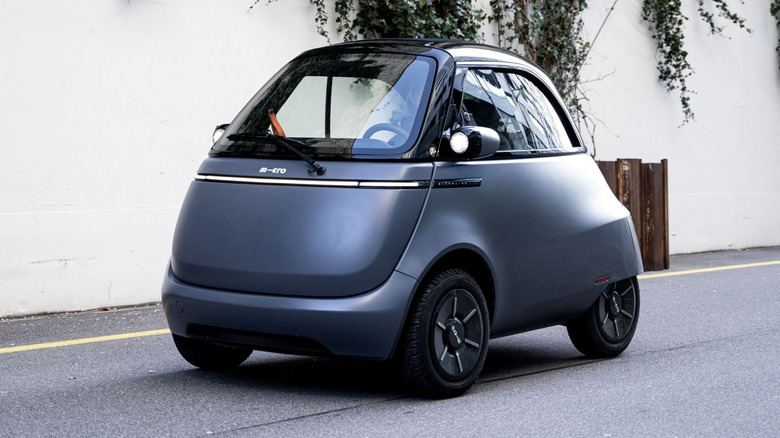
Most of the other cars here take a classic nameplate and revive it with a retro-modern design, but the Microlino is a little different to the rest. It's certainly a recognizable design, at least for micro car enthusiasts, but it isn't being made by its original manufacturer. The Microlino is unmistakably a modern revival of the BMW Isetta, and was initially revealed at the Geneva Motor Show in 2016. However, Bavaria's finest are not behind the revival — instead, Microlino was founded by a Swiss businessman who previously designed a three-wheeled kick scooter.
The car is now in production and on sale in Europe, where it offers an officially claimed 141 mile range and a 56 mph top speed in its priciest guise. While it could technically complete longer journeys, the Microlino is primarily intended to be an urban runabout in congested European cities where traffic rarely moves faster than around 20 mph. Since it's so small, it can also park perpendicular to the curb in an average parking space. It might be more of a fun novelty than anything else, but it's certainly one of the most unique classic car designs to be revived as an EV.
Want the latest in tech and auto trends? Subscribe to our free newsletter for the latest headlines, expert guides, and how-to tips, one email at a time.
Read the original article on SlashGear.













